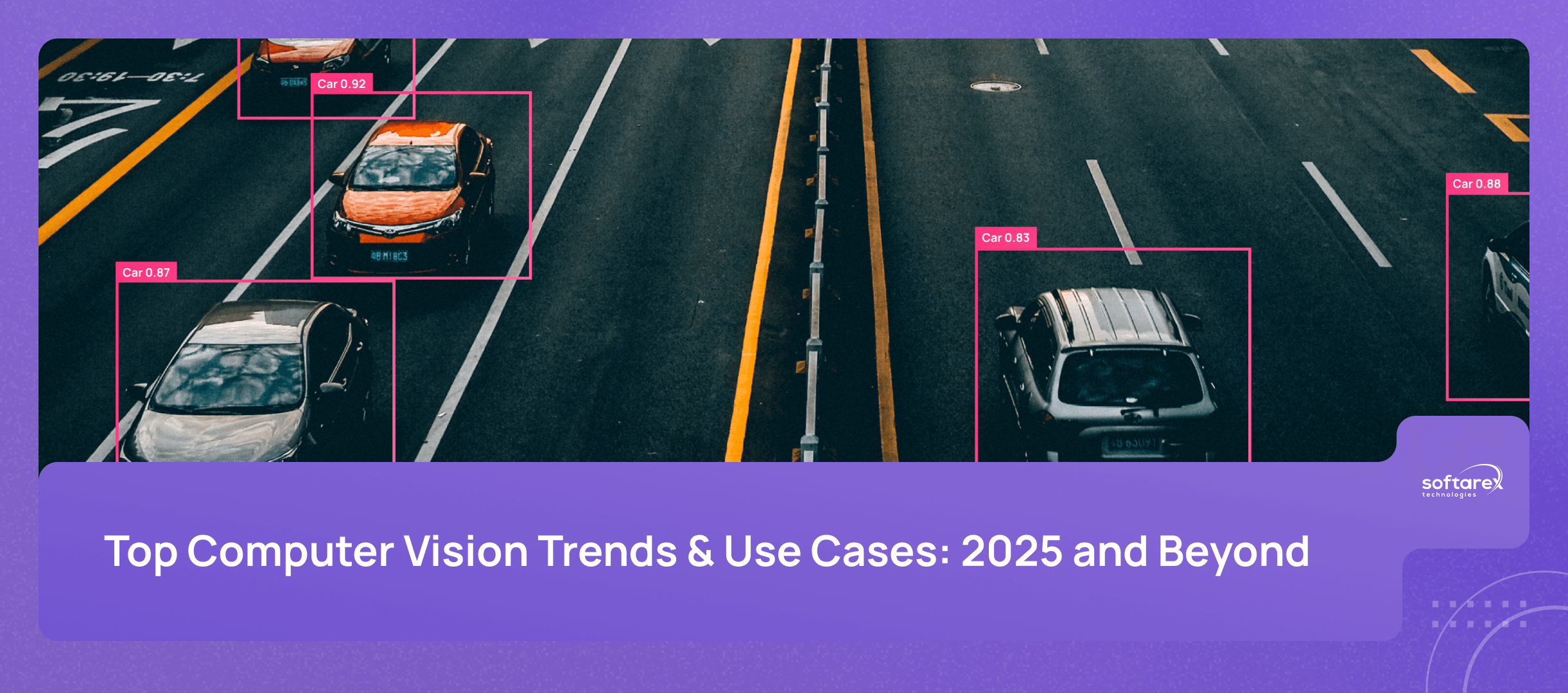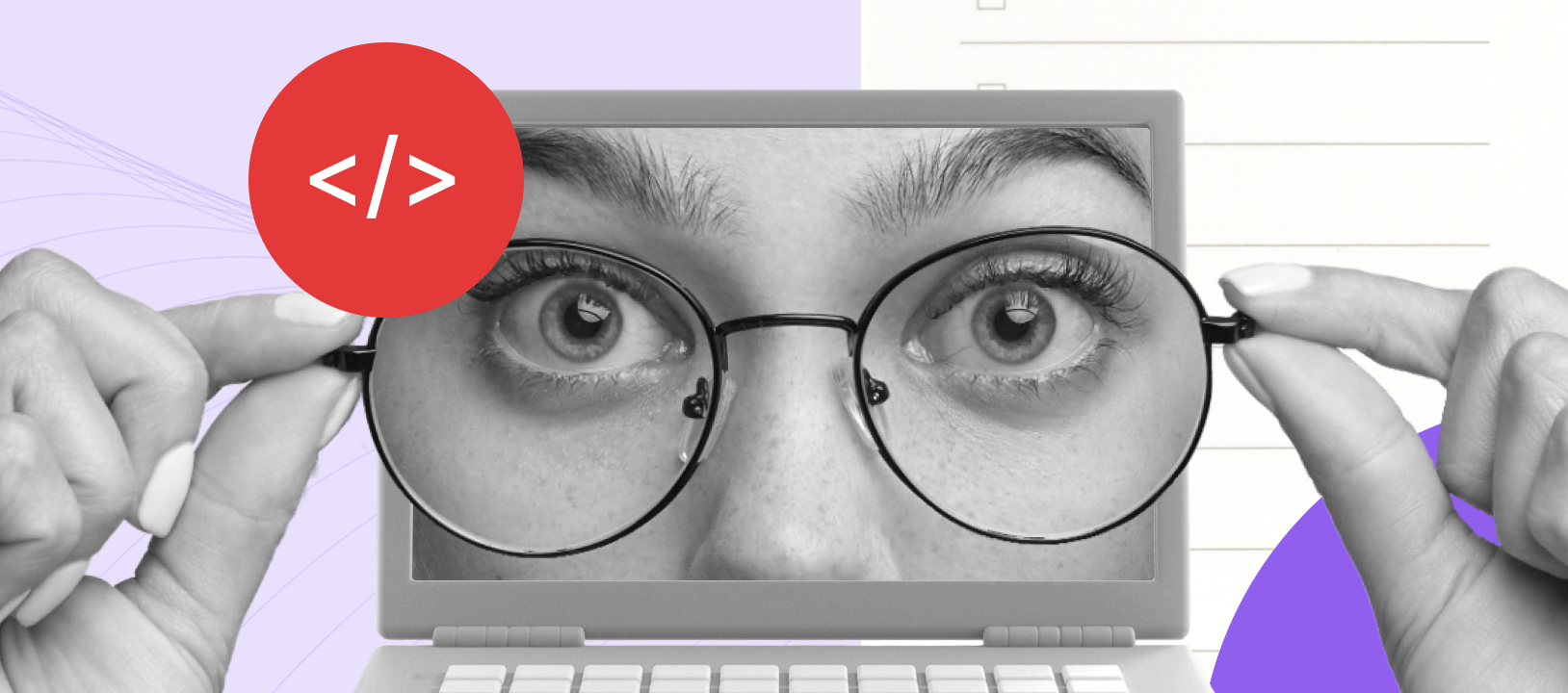A few blog posts back, we discussed the role of AI across the software development lifecycle. In this piece, we continue exploring the capabilities of AI and zoom in on one particular stage of SDLC: coding.
Despite being a recent innovation, AI programming tools have swiftly become indispensable allies for developers. In the US alone, an impressive 92% of software engineers now utilize them both in and outside of work.
This widespread adoption is no coincidence. While not replacing human developers, AI amplifies their skills and expertise by shouldering mundane tasks, allowing them to focus on the problem-solving and creative part of their job. As a result, engineers using the technology complete tasks 55% faster, are 25-30% more likely to successfully tackle new professional challenges within given timeframes, and produce higher quality code.
Below, we’re going to take an all-around look at AI coding tools and explore both their capabilities and limitations.
How AI Coding Assistants Work
Automated AI code generation relies on four connected technologies working together to transform written commands into working code.
Natural Language Processing (NLP) translates human instructions into machine-readable formats by applying linguistic principles, statistics, and Machine Learning algorithms. It goes beyond simple translation, analyzing context and user intent much like human comprehension would.
Deep learning models, using artificial neural networks, analyze code repositories to identify patterns and best practices from millions of examples. These models excel at complex pattern recognition tasks and are trained on extensive datasets from open-source projects.
Generative AI then creates custom code through unsupervised and semi-supervised learning techniques, aiming to produce code that matches human-written quality.
Finally, Large Language Models (LLMs) ensure the code is contextually appropriate and syntactically correct by predicting and arranging code elements based on their training across vast text and code databases.
Capabilities of AI Coding Tools
AI tools benefit software developers in numerous ways. They excel at suggesting the next line of code or even entire code snippets as programmers type, saving time on repetitive and boilerplate patterns. This allows engineers to save mental effort needed for manual work and finish tedious tasks faster. The autocomplete feature proves especially valuable for beginners who are still learning the syntax and logic of their chosen programming language.
The capabilities of AI coding tools extend beyond simple autofilling. These smart assistants can also generate code blocks and even entire functions. Developers provide detailed descriptions of desired functionality, and AI offers suggestions for how to accomplish the task. This feature can be a real life-saver for engineers facing writer’s block and struggling to write the first line of code.
Furthermore, some tools come with real-time chats. Developers can ask AI for any kind of assistance from finding bugs and reviewing code for potential improvements to explaining technology concepts and searching for industry standards. With a knowledgeable assistant always by their side, specialists can spend less time searching the internet for information and resolve challenging issues more quickly.
Additionally, the chat functionality can smooth the learning curve for engineers mastering new programming languages or honing their existing skills. In case a developer has a hard time understanding a difficult concept, they can ask AI to break it down and visualize for them in a clear and step-by-step manner. This virtual, anytime assistance speeds up the learning process and makes it much more convenient, empowering engineers of all experience levels to acquire new skills.
Limitations of AI Coding Tools
Despite all their benefits, AI programming, as basically any AI innovation, does have its drawbacks. It’s important to be aware of them to not put high hopes on the technology.
Accuracy
Despite the widespread adoption and growing popularity of AI coding tools, one-third of developers don’t trust the output smart assistants provide. And they have every right to be skeptical. GenAI is known for hallucinations and inaccuracies, and not only when it comes to texts and images, but code too.
Recent research supports these concerns. A study evaluating the role of ChatGPT and other AI tools in software development revealed that their biggest limitation is sometimes producing erroneous (38%) and inefficient code (29%).
The study results were proven in a real-world workplace setting. A group of scientists at Microsoft and the Institute for Work Life conducted a randomized controlled trial of Github Copilot. While the results showed that AI code generator tools enhanced productivity and were enjoyable to work with, programmers still experienced challenges using them. One of the most reported issues was code that appears correct but actually is not — a serious limitation, as it can cause engineers to overlook subtle bugs that they might have caught when writing code manually.
Some respondents even suggested that junior developers should avoid using these assistants altogether, as they may lack the expertise to identify technically flawed code that appears syntactically correct. This, however, contradicts with the fact that AI coding accelerates learning both for novice and expert programmers.
We believe that, despite their imperfections, these tools are still a programmer’s friend, not a foe. As with any new technology, it’s essential to treat them merely as assistants requiring human supervision, not an equally experienced coding partner. By understanding their limitations and applying them primarily to simpler tasks that don’t demand advanced expertise or creativity, developers can unlock their maximum potential.
Over Reliance on AI Coding
While some developers don’t fully trust AI due to its occasional mistakes, there are those who tend to trust AI too much. Coding assistants can present both opportunities and challenges for developers. Seduced by the fast and easy answers these solutions provide, engineers increasingly turn to them, which eventually leads to excessive use and over-reliance on technology.
A behavioral study from Martin Luther University in Germany investigated users’ trust in AI recommendations. The results revealed that individuals tend to choose AI advice over their own judgments, alternative human recommendations, or information suggesting the AI’s advice might be less reliable. This shows that the mere knowledge that information comes from AI can cause people to blindly trust it, regardless of its quality or reliability.
Another study revealed that users tend to rely on automatically generated outputs if they are accompanied by explanations. A non-informative explanation, like an accuracy score, improves human trust, even when the claimed accuracy is as low as 50%.
By over-depending on AI programming tools, developers risk more than just poor code quality. Recent research suggests excessive use of AI can negatively impact cognitive skills, including creativity, critical thinking, and decision-making. By over-relying on coding assistants, engineers may become less inclined and motivated to generate fresh ideas, conduct independent research, and make their own decisions.
Moderation is key. While AI assistance can boost productivity, it’s important to strike a balance between automating routine operations and prioritizing human expertise for crucial and complex tasks.
Security
A Venafi’s newest survey revealed that 92% of 800 security leaders are concerned about the use of artificial intelligence code within their organization. After accuracy, security remains the most widely discussed challenge associated with AI coding tools—and for good reason.
Since programming assistants are trained on data from open-source repositories, they can inadvertently learn and replicate code containing vulnerabilities and bugs. The 2024 “Open Source Security and Risk Analysis” report by OSSRA found that 84% of codebases had at least one open-source vulnerability, with 74% harboring high-risk security issues. Moreover, these AI-powered tools may perpetuate security flaws when generating code for projects whose codebases already contain vulnerabilities, as they tend to follow existing patterns and structures.
This, however, doesn’t mean AI coding technology should fade into obscurity. Experts at Snyk believe it’s possible for companies to enjoy the benefits of programming tools without sacrificing security, provided they follow strict security guidelines. Key recommendations include enforcing thorough code review practices, integrating static application security testing (SAST), developing comprehensive evaluation protocols for new AI technologies, and prioritizing company-wide security training alongside technical infrastructure improvements.
AI Coding: Finding the Balance Between Innovation and Expertise
The emergence of AI coding has opened an exciting new chapter in software development’s evolution. While these tools streamline certain aspects of programming, they also highlight the value of human expertise. The true potential lies not in automation alone, but in how skilled developers can leverage these advancements while maintaining the highest standards of code quality and security.
At Softarex, we’re excited about this technological revolution and are eager to explore how it will shape the future of our industry. We, however, remain committed to our core strength: delivering exceptional software through human creativity, expertise, and precision. Our team approaches each project with a balanced blend of out-of-the-box thinking and best practices to ensure every solution serves its purpose and brings top-quality business results.
Whether you’re looking to build an application from scratch or upgrade your existing systems, we are ready to turn your vision into reality. Drop us a line to discuss your project.









